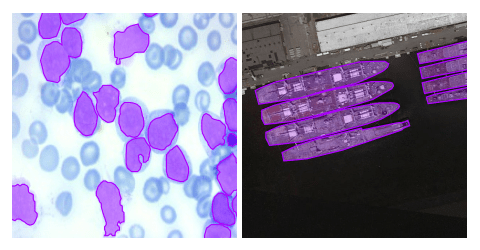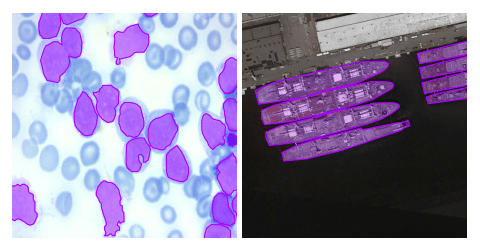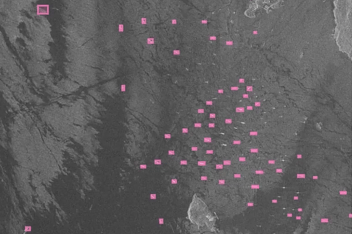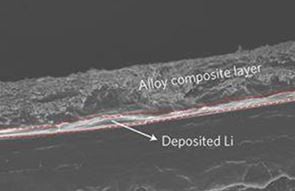Unveiling the Different Types of High Resolution Images

Discover the various types of high resolution images and their applications in this informative blog post.

Understanding the Importance of High Resolution Images
High resolution images play a crucial role in various industries and fields. They provide a level of detail and clarity that is essential for many applications. Whether it's for scientific research, remote sensing, or even personal use, high resolution images offer a level of quality that cannot be matched by lower resolution alternatives.
One of the main advantages of high resolution images is their ability to capture intricate details. This is especially important in fields such as medical imaging, where every small detail can make a difference. High resolution images allow doctors and researchers to examine tissues, organs, and cells with exceptional clarity, leading to more accurate diagnoses and treatments.
High resolution images are also invaluable in the field of remote sensing. Remote sensing images, which are captured from satellites or aircraft, provide valuable information about the Earth's surface. They are used for a wide range of applications, including mapping, land cover classification, environmental monitoring, and disaster management. The high resolution of these images allows for accurate analysis and interpretation of the data, leading to better decision-making and planning.
In summary, high resolution images are essential in various industries and fields. They offer unmatched detail and clarity, making them indispensable for scientific research, graphic design, remote sensing, and many other applications.
Exploring the Different Types of High Resolution Images
There are several types of high resolution images, each with its own unique characteristics and applications. Let's explore some of the most common types:
1. Remote Sensing Images: As mentioned earlier, remote sensing images are captured from satellites or aircraft. They are used for mapping, land cover classification, environmental monitoring, and more. These images provide a bird's eye view of the Earth's surface, allowing for detailed analysis and interpretation.
2. Microscopic Images: Microscopic images are captured using specialized microscopes. They are used in various scientific fields, such as biology, chemistry, and materials science. These images reveal details at a microscopic level, allowing researchers to study cells, molecules, and other tiny structures.
3. Panoramic Images: Panoramic images are wide-angle images that capture a wide field of view. They are often used in photography and virtual tours to provide a more immersive experience. Panoramic images can be created by stitching together multiple photos or by using specialized panoramic cameras.
These are just a few examples of the different types of high resolution images. Each type has its own unique applications and benefits, making them valuable tools in various industries and fields.
Remote Sensing Images and Their Applications
Remote sensing images, as mentioned earlier, are captured from satellites or aircraft. They play a crucial role in various applications, including:
- Mapping: Remote sensing images are used to create accurate maps of the Earth's surface. They provide detailed information about land cover, topography, and other features, helping in urban planning, resource management, and navigation.
- Land Cover Classification: Remote sensing images are used to classify different land cover types, such as forests, agriculture, water bodies, and urban areas. This information is valuable for environmental monitoring, land management, and ecosystem analysis.
- Environmental Monitoring: Remote sensing images are used to monitor changes in the environment, such as deforestation, urban expansion, and natural disasters. They provide valuable data for environmental impact assessment, climate change monitoring, and disaster management.
- Disaster Management: Remote sensing images are crucial in disaster management. They can be used to assess the extent of damage caused by natural disasters, such as earthquakes, floods, and wildfires. This information helps in planning rescue and relief operations, as well as in assessing the long-term impact of the disaster.
These are just a few examples of the applications of remote sensing images. Their high resolution and detailed information make them invaluable tools in various fields.
Understanding Microscopic Images and Their Applications
Microscopic images are captured using specialized microscopes and are used in various scientific fields. Some of the applications of microscopic images include:
- Biological Research: Microscopic images are used to study cells, tissues, and organisms at a microscopic level. They help researchers in fields such as biology, medicine, and genetics to understand the structure and function of living organisms.
- Materials Science: Microscopic images are used to study the structure and properties of materials at a microscopic level. They help in the development of new materials, quality control, and failure analysis.
- Forensic Science: Microscopic images are used in forensic science to analyze trace evidence, such as fibers, hairs, and fingerprints. They provide valuable information for criminal investigations and court proceedings.
- Nanotechnology: Microscopic images are essential in the field of nanotechnology, where researchers study and manipulate materials at the nanoscale. They help in the development of new nanomaterials and nanodevices, with applications in electronics, medicine, and energy.
These are just a few examples of the applications of microscopic images. Their high resolution and magnification capabilities make them indispensable in various scientific fields.
Understanding Panoramic Images and Their Applications
Panoramic images, as mentioned earlier, are wide-angle images that capture a wide field of view. They have several applications, including:
- Photography: Panoramic images are commonly used in photography to capture breathtaking landscapes, cityscapes, and architecture. They provide a more immersive and expansive view, allowing viewers to experience the scene as if they were there.
- Virtual Tours: Panoramic images are used in virtual tours to create a realistic and immersive experience. They allow users to explore a location or property from different angles and perspectives, providing a sense of presence and interactivity.
- Real Estate: Panoramic images are used in real estate listings to showcase properties. They provide a more comprehensive view of the property's interior and exterior, helping potential buyers to visualize and assess the space.
- Tourism and Travel: Panoramic images are used in tourism and travel promotions to showcase destinations and attractions. They allow viewers to get a glimpse of the beauty and uniqueness of a place, enticing them to visit.
These are just a few examples of the applications of panoramic images. Their wide field of view and immersive nature make them popular in various industries.
Utilizing High Resolution Images for Various Purposes
High resolution images can be used for a wide range of purposes. Some of the common applications include:
- Surveillance: Aerial, satellite, and drone photography are extensively utilized in the defense industry and intelligence gathering. These images, captured by a diverse range of sensors, offer a wealth of information about the battlefield and enemy forces, thus playing a crucial role in upholding national security.
- Urban Planning: Geospatial image data plays a significant role in shaping urban landscapes, assisting in surveying, and facilitating urban development. In recent times, there has been a surge in the use of geoAI in the fields of remote sensing and geography, highlighting its growing importance and potential.
- Earth Science and Agriculture: High-resolution satellite and aerial imagery are invaluable tools for understanding and studying various aspects of the Earth's environment. These images provide a wealth of information about weather patterns, geological processes, agricultural practices, and vegetation dynamics. The size of the images is often substantial, and the higher the spatial resolution, the greater the level of detail and information that can be extracted. By harnessing the power of high-resolution imagery, researchers and scientists can gain deeper insights into the intricate workings of our planet.
- Medical Science Research: High resolution images play a vital role in scientific research. They provide detailed information for analysis and interpretation, helping researchers to make new discoveries and advancements in their respective fields.
- Manufacturing: Microscopes have become an indispensable tool across various sectors of the manufacturing industry. They play a crucial role in materials analysis, precise measurements, and semiconductor inspection. As innovative technologies like nanomachines, precision machinery, and extreme ultraviolet lithography continue to evolve, there is an ever-increasing demand for high-resolution microscope images. This trend shows no signs of slowing down, as the importance of these images becomes more apparent in driving progress and innovation.
These are just a few examples of the many purposes for which high resolution images can be utilized. Their quality and detail make them versatile and valuable in various contexts.





